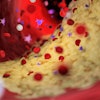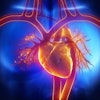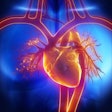Adding deep learning to CT imaging to assess changes in subcutaneous adipose tissue (SAT) over time could help predict outcomes among individuals vulnerable to lung cancer, according to research presented at the recent RSNA meeting.
The finding could improve risk assessment among those at high risk of the disease, particularly heavy smokers, said presenter Fabian Pallasch, MD, of University Medical Center Freiburg in Germany.
"Deep learning allows for opportunistic screening of subcutaneous adipose tissue in lung cancer screening chest CTs," he said.
Studies suggest that body composition can help predict cancer and cardiovascular disease outcomes, the investigators noted. Most of these studies have focused on changes in the muscle; less is understood about the role assessment of subcutaneous adipose tissue (SAT) could play in a screening setting.
The group developed a deep learning model for automatic 3D quantification of adipose tissue on low-dose chest CT and assessed any associations between this tissue and mortality among a population of heavy smokers at high risk of lung cancer who participated in screening.
Included in the study were 26,144 patients who participated in the National Lung Cancer Screening Trial (NLST) at baseline and at one-year follow-up (total scans, 52,228); participants were between the ages of 55 and 70 and had at least 30 smoking pack years or more. The team tracked SAT volume and density as measures of the SAT quality in each patient. The primary outcome of the research was all-cause mortality, with additional outcomes of mortality due to lung cancer or cardiovascular disease.
Baseline characteristics of the study population included the following:
Baseline characteristics of 26,144 patients at risk of lung cancer
| Body mass index (over 25 considered overweight; 30 considered obese) | 28.79 |
| Adipose tissue volume, mL (mean) | 4788.5 |
| Adipose tissue density, Hounsfield units (mean) | -90.5 |
| All-cause death | 7% |
| Atherosclerotic cardiovascular disease death | 1.8% |
| Lung cancer death | 1.6% |
At baseline, only SAT density was associated with all-cause mortality (after adjusting for risk factors such as age, sex, race, smoking status, pack years, presence of hypertension and/or diabetes, and past stroke or heart attack), with a hazard ratio of 1.07 (with 1 as reference) and a p-value of 0.003).
The group also found that those patients who experienced "fat wasting" -- a decline in SAT volume or density -- of 10% or more over the period of a year had poorer survival outcomes compared to those with stable SAT volume or density (SAT volume hazard ratio, 1.94 [p <0.001]; SAT density hazard ratio, 3.1 [p <0.001]). The investigators also noted that "similar associations were found for lung cancer and cardiovascular mortality."
"[SAT density] at baseline and a decrease in SAT volume or [SAT density] within one year are independently associated with mortality in lung cancer screening-eligible heavy smokers beyond clinical risk factors, which may help to improve personalized risk assessment and prevention," they reported.
The study findings highlight the promise of AI for predicting lung cancer outcomes among those at high risk, according to Pallasch and colleagues.
"Implementing a tool like the proposed deep learning model into the electronic medical record could help for opportunistic screening of altered subcutaneous adipose tissue," he concluded. "Extracting this unused information may be helpful to identify high-risk individual and reduce morbidity and mortality."



















